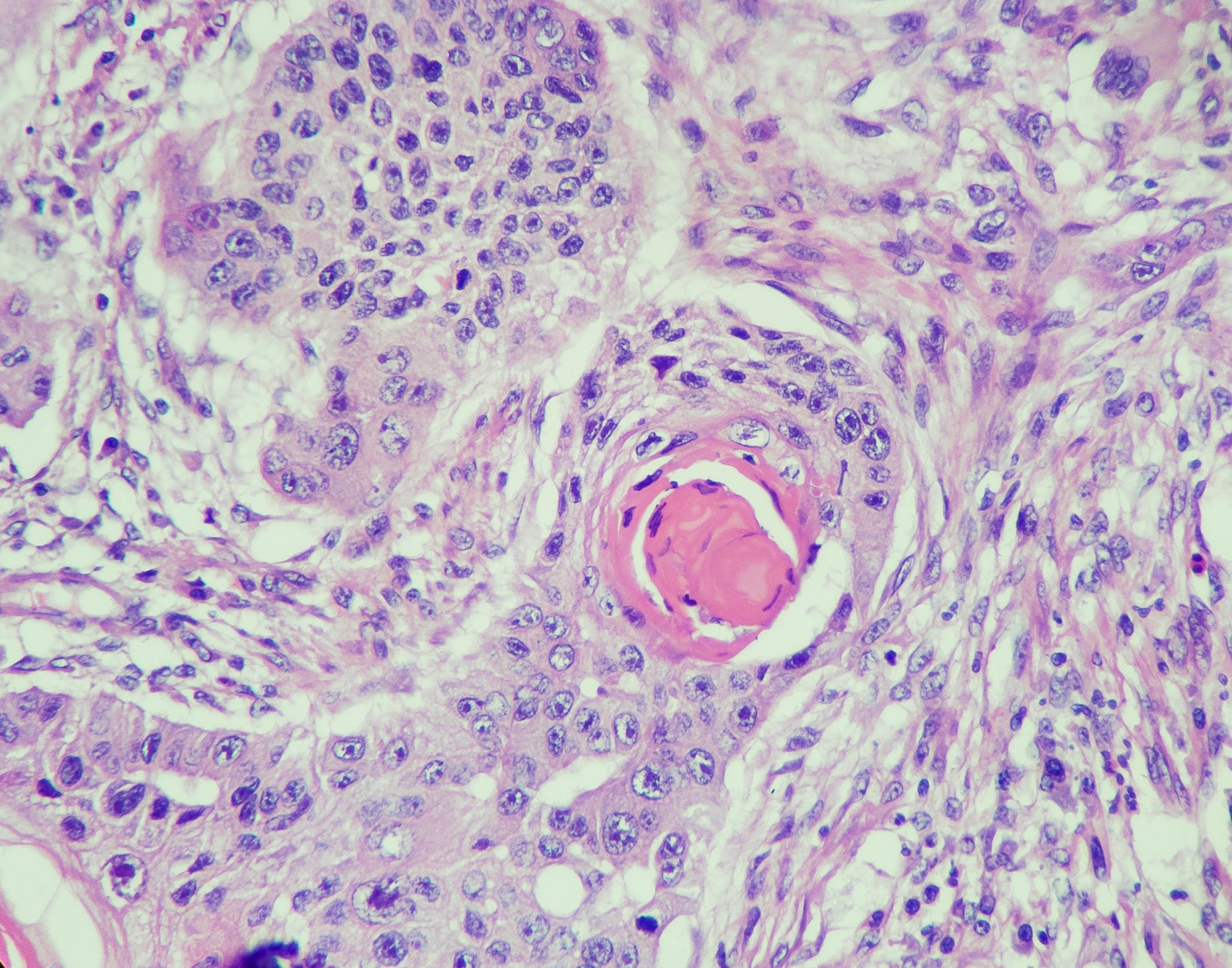- Acne
- Actinic Keratosis
- Aesthetics
- Alopecia
- Atopic Dermatitis
- Buy-and-Bill
- COVID-19
- Case-Based Roundtable
- Chronic Hand Eczema
- Chronic Spontaneous Urticaria
- Drug Watch
- Eczema
- General Dermatology
- Hidradenitis Suppurativa
- Melasma
- NP and PA
- Pediatric Dermatology
- Pigmentary Disorders
- Practice Management
- Precision Medicine and Biologics
- Prurigo Nodularis
- Psoriasis
- Psoriatic Arthritis
- Rare Disease
- Rosacea
- Skin Cancer
- Vitiligo
- Wound Care
Article
Facial Squamous Cell Carcinomas Successfully Treated with Topical Solution and Laser Therapy
Author(s):
Aminolevulinic acid 20% topical solution activated by pulsed dye laser and blue light achieves positive results in treating squamous cell carcinoma.
To determine the efficacy and safety of combining aminolevulinic acid (ALA), pulsed dye laser (PDL), and photodynamic therapy (PDT) for treatment of facial cutaneous squamous cell carcinoma in situ (isSCC), investigators conducted a study of 20 adult (mean age 70.7 years) patients.1 Findings showed that ALA-PDL-PDT treatment has excellent results for treating facial isSCC.
To meet study criteria, lesions had to be 0.4 -1.3 cm in diameter and have been confirmed to be isSCC through biopsy. This was a prospective, single-center, investigator-initiated, open-label pilot clinical trial conducted from December 2020 to September 2021.
Participants were treated in two sessions spaced 30 days apart. Each treatment consisted of topical application of ALA HCL, 20% solution to the lesion and surrounding area. The treated skin was covered with a bandage and incubated for 18 to 24 hours. Patients were instructed to keep the area dry until the following day when PDL with a pulse duration of 0.45 millisecond, fluence of 13 J/cm2 (amount determined by the investigator) and blue light illumination (BLU-U) at 10 J/cm2 for 16 minutes and 40 seconds, were administered. Researchers used the PDL before treatment with conventional PDT in order to activate the photosensitizer.
Surgical excision for histopathological assessment of the treated area was performed 4 to 6 weeks following the second treatment. The investigator assessed clinical clearance (CC) of the lesion, “defined as no clinically visible lesion remaining at the site,”1 and examined lesions for pigmentation at each office visit.
Lesions on 17 of the 20 (85%) patients reached histological clearance, the primary endpoint, at the excision site. Of the patients not achieving histological clearance, 2 had untreated skip lesions. Prior to surgical excision, CC was observed in 13 of the participants.
None of the participants reported serious adverse events (AEs) during the study period and of those events that were reported investigators determined they were not related to the study protocol.
This study found that ALA-PDL-PDT used on small facial isSCC was an effective treatment with few adverse events.
Reference
- Nestor MS, Han H, Ceci FM, Lawson A, Gade A. Evaluating the safety and efficacy of aminolevulinic acid 20% topical solution activated by pulsed dye laser and blue light in the treatment of facial cutaneous squamous cell carcinoma in situ. J Cosmet Dermatol. 2023;00:1-5. doi:10.1111/jocd.15886
Newsletter
Like what you’re reading? Subscribe to Dermatology Times for weekly updates on therapies, innovations, and real-world practice tips.
















